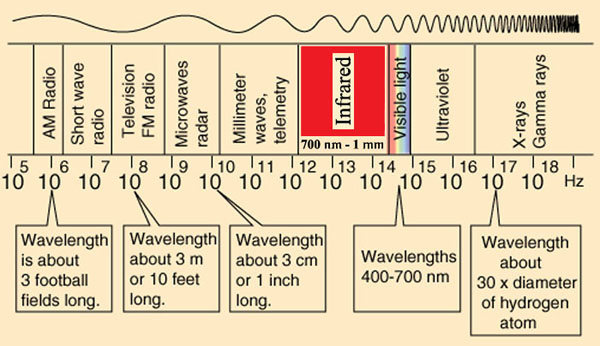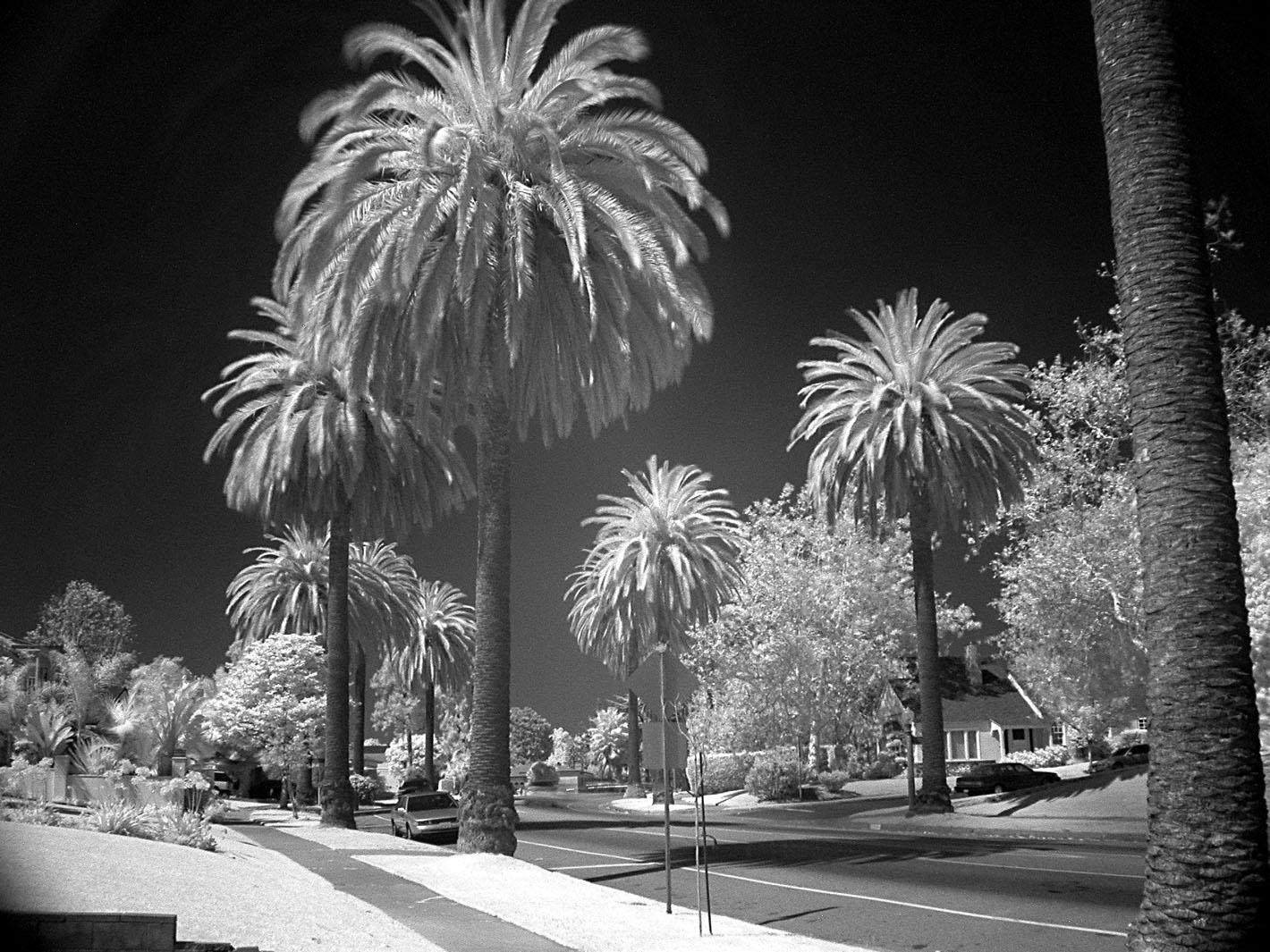|
Michael A. Stecker
mastecker@gmail.com

.
Digiphoto Home Page
Alaska
Albuquerque balloons
Antarctica
Astronomical Sites
Chile
Clouds Egypt
England Flowers
icebergs
infrared
Monument Valley
Nepal New England's autumn leaves New Zealand
scenic treasures
Switzerland
Tahiti
Yosemite in Spring
Yosemite in Winter
Infrared Imaging
The electromagnetic spectrum includes gamma rays,
X-rays, ultraviolet, visible, infrared, microwaves, and radio waves. All
of these forms of radiation (light) travel at 186,000 miles/second
(300,000,000 meters per second) in a vacuum. Infrared radiation lies
between the visible and microwave portions with wavelengths from 700
nanometers to 1 millimeter (a nanometer = 1 billionth of a meter or
0.000000001 meter; while a millimeter equals 1 thousandth of a meter or
0.001 meter). All infrared light is invisible to our eyes, but can be seen
by a few animals like some snakes.

Photographing infrared in the black and white mode gives some very
interesting and surrealistic effects. Green plants reflect a lot of
infrared and therefore look white, while blue sky shows almost no infrared
and appears black. In general contrast is increased. All the photos below
were taken in the near infrared with a Nikon Coolpix 4500 digital camera
through a RD-10 (Wratten 88A) filter from
Harrison & Harrison
Optical Engineers, Inc. . The Wratten 88A filter transmits light in
the near infrared above 710 nm with a 50% transmissivity at ~750 nm. I
used the auto-focus and auto-exposure modes for all images. A tripod is
needed because of the long exposure times.
|
|

"On the street where I live" -- Motor Avenue in Los
Angeles, California. The infrared effect is well seen here with the green
grass and palm fronds becoming white and the blue sky darkening.
Photographic Data: Nikon Coolpix 4500 digital camera and Wratten 88A IR
filter in the black and white mode: Auto focus, auto exposure, auto white
balance, focal length = 7.8 mm, f/5.3 and 1.77 seconds exposure.
|